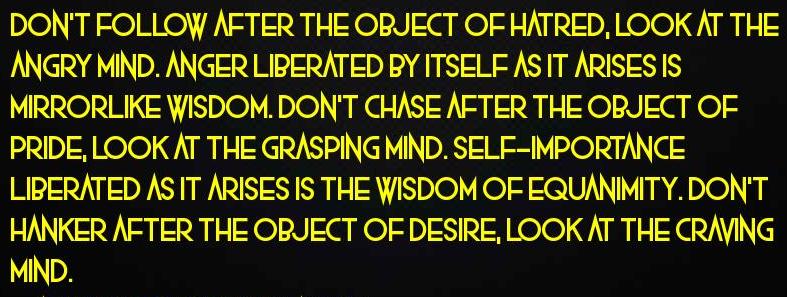 This week, University staff across the UK are on strike, their action pointing towards pensions, pay and conditions. Not being a UCU member, I am still at work this week – not a straightforward decision. In fact, in the past 2 weeks I have felt a growing sense of anxiety. A child growing up in the 80s, I have memories of the miners industrial action and all the aggression and violence associated with picket lines. Coming to work this week has been the first time I have had to cross a picket line in my working life and I have been aware of the stories building in my imagination, noticing how each one adds to the anxiety. And whilst I could see my attempts to avoid the issue (e.g. “how can I change my teaching so I can work from home?”), I knew this was an opportunity: to meet my fear with courage.
This week, University staff across the UK are on strike, their action pointing towards pensions, pay and conditions. Not being a UCU member, I am still at work this week – not a straightforward decision. In fact, in the past 2 weeks I have felt a growing sense of anxiety. A child growing up in the 80s, I have memories of the miners industrial action and all the aggression and violence associated with picket lines. Coming to work this week has been the first time I have had to cross a picket line in my working life and I have been aware of the stories building in my imagination, noticing how each one adds to the anxiety. And whilst I could see my attempts to avoid the issue (e.g. “how can I change my teaching so I can work from home?”), I knew this was an opportunity: to meet my fear with courage.
As I walked off the train and up the platform towards the picket line, I did my best to stay in touch with my experience – to not push it down and stay with the growing physical sensations. In the past two weeks, I have been practicing this on the cushion – each time a remembering of what was ahead arose, dropping the story and coming back to my chest, the shallow breath, the beating heart, the tightening shoulders. Practice makes perfect – or at least, practice makes one prepared. Preparation in this sense is not a rehearsal, as that can make us act from a script. Preparation in this sense is becoming confident in being open to, and being with experience.
My recent entry on to the Vajrayana path of Buddhism deepens my understanding of this view. As I explained a few weeks back, in this system the very ‘poison’ in life becomes the medicine. As soon as we recognise confusion, we use that to ‘wake-up’, to contact our experience directly and access the inherent wisdom. This requires that we see the confusion as it is arising – or, we can find ourselves IN the confusion and acting out from that fog.
As clients often ask “How to do that?”
My last two weekends have been spending time with this. A couple of weeks ago, I attended a workshop in London with Dzogchen Ponlop Rinpoche where he presented ideas from his new book “Emotional Rescue”; and then this past weekend I was on the other side of the fence – facilitating an experiential workshop with our second year trainees helping them understand the embodied principles of Gestalt psychotherapy. These two weekends, with the backdrop of my new practices, have felt like a deep immersion on ‘being with’, and it has helped me immensely ‘to remember’ to open rather than to constrict.
Rinpoche, a teacher in the Tibetan Nyingma lineage, now resides in Seattle and incorporates much Western psychology and neuroscience in his work. I appreciated his reminders throughout the weekend that “emotional rescue” is a practice we can all do, but can be best supported working with a professional – be that a psychotherapist or body therapist. Indeed, much of my approach (as a Buddhist and Gestalt practitioner) is concerned with helping clients digest what can be the new terrain of emotional experiencing; and the clients that make the most progress are those that practice that experiencing in the days between our sessions. Turning toward, rather than away, from our pain takes courage – and courage can be ENcouraged with a helping hand of the other.
Not surprisingly from a meditation master, Rinpoche spoke to the need for mindfulness BUT not in the way it has become popularised. He talked about the root of the Sanskrit and Tibetan (Smrti and Trengpa respectively) being more correctly translated as ‘remembering’ or ‘recollection’ – going back to that lament “but how to remember (to be mindful)”?. We might learn meditation and become very adept at resting our attention on the breath or another object. However, walking through everyday life, how do we remember to pay attention to our experience – especially when triggered by “inconsiderate drivers” or “insensitive colleagues” as examples. Rinpoche wants to help people remembering by outlining a 3 stage process:
1) Mindful Gap
2) Clear seeing and…
3) Let go
It is a neat little system, powered by Buddhist and psychotherapeutic thought; and I would encourage anyone interested in this area to take a look at it in more detail. What I wanted to emphasise here in this week’s post is that first step: minding the gap. As a Gestalt therapist, I privilege the power of awareness and this first step speaks to so much of the simple yet quite radical shifts that can happen when we embrace this life approach.
 Buddhist psychology sees emotion as adding a thought and a meaning to a felt sensation, a definition supported by neuroscientists. Emotions aren’t the problem. Problems arise because we tend to apply a label to an emotion rather than stay with the energy, and this solidifies experience. Read that again – emotions are not the problem, the labelling of that emotion IS. Rinpoche pointed to how we react to the label rather than the raw energy we are experiencing, and the invitation is to stay with the shock or upsurge of energy when it arrives in our experience. Like the flowing river – we can sit alongside the river and the calm surface can have us forget the quality of its flow; it is only when water hits rocks that we come to notice the flow. Emotional energy is like this – there is a flow always in us; when triggered that upsurge reveals the energy always there. The stronger the upsurge, the better chance we have to understand and work with our experience. The upsurge gives us a chance to pause, to open up a gap: and to listen to the message and wisdom being offered from within.
Buddhist psychology sees emotion as adding a thought and a meaning to a felt sensation, a definition supported by neuroscientists. Emotions aren’t the problem. Problems arise because we tend to apply a label to an emotion rather than stay with the energy, and this solidifies experience. Read that again – emotions are not the problem, the labelling of that emotion IS. Rinpoche pointed to how we react to the label rather than the raw energy we are experiencing, and the invitation is to stay with the shock or upsurge of energy when it arrives in our experience. Like the flowing river – we can sit alongside the river and the calm surface can have us forget the quality of its flow; it is only when water hits rocks that we come to notice the flow. Emotional energy is like this – there is a flow always in us; when triggered that upsurge reveals the energy always there. The stronger the upsurge, the better chance we have to understand and work with our experience. The upsurge gives us a chance to pause, to open up a gap: and to listen to the message and wisdom being offered from within.
This is the Vajrayana – using the phenomenal world to wake up to our sense experience and the inherent wisdom we all possess. Every situation thus becomes our teacher – and with courage, we can seek out difficult situations to practice in (like a picket line!)
This is the fourth year I have facilitated the Gestalt experiential weekend workshop for our Humanistic psychotherapeutic counselling students. The previous weekend with Rinpoche was at the forefront of my mind as were my own re-invigorated attempts to live from a more embodied position. Using Gestalt experiments, my co-facilitator and I were helped students to notice their experience more directly. There was an encouragement to the group to slow everything down; to give time for them to notice a gap between something happening in the group and a response. Our hope was that this would help them see where they were getting stuck – in relationship to self and to other. Perhaps where they had been overlaying long held stories on to what was unfolding in the moment; or their propensity to pay more attention to the other and their process than their own. One student shared that in slowing down, he was able to untangle his reaction (based on a label and a story that goes with the energy of the emotion) and his capacity to notice it. “I am angry” became “I notice there is anger in my stomach” – and in that gap of time and space, new possibilities can emerge – there becomes a choice.
 In my experience, weekend workshops like this are invaluable for the trainee therapist – less emphasis on ‘becoming the therapist’ and more on ‘being the person’. I posited to the group at one point – how can you expect to hold AN other while they are being with their anger / sadness / shame if you cannot recognise and be with your own emotional world?
In my experience, weekend workshops like this are invaluable for the trainee therapist – less emphasis on ‘becoming the therapist’ and more on ‘being the person’. I posited to the group at one point – how can you expect to hold AN other while they are being with their anger / sadness / shame if you cannot recognise and be with your own emotional world?
Two very enjoyable and rewarding weekends, each underlining how passionate I am about my work and my attempts to integrate Buddhist and Western Ideas. Yet, they were two very busy weekends that have left me bereft of downtime and personal space for processing what is going on in my emotional, psychological and spiritual life. Coming back to the top of this post, I sense that much of my anxiety triggered by the strike comes from not having enough ‘gap’. Too much ‘doing’ compressing my ‘being’ and lessening the space to digest. The waves have been distracting away from the depth of the ocean open to me.
Being more mindful of MAKING gaps is something to remember.

